Meet Our Animals
The Brandywine Zoo proves that great things do come in small packages. The Zoo features animals from the tropical and temperate areas of North and South America, Asia and Africa. Our animals range from more common species to the highly endangered. All enjoy natural settings and welcome your visit to the zoo. Some animals may be off exhibit during cold weather.
Corucia zebrata
Prehensile-tailed Skink

Habitat
Geographic Region & Range
Diet
Physical Description
The prehensile-tailed skink is the largest of the known skinks. The body is olive to green in color, with scattered black scales on the back and legs, helping to camouflage it.
Size
Weight
Lifespan
Natural Habitat: unknown
Under Human Care: ~15 years
Threats
Status
What are AZA Zoos doing for
Prehensile-tailed Skink
Prehensile Tailed Skinks are managed in a Green Level SSP program by the Lizard Taxon Advisory Group. 295 PT skinks are held at 102 AZA facilities.
Fun Facts
This is the only skink that is completely herbivorous.
Not only are Prehensile-tailed skinks ovoviviparous (live-bearing) reptiles, but they also exhibit viviparous matrotrophy, where embryos receive nutrients transferred from the mother.
They are very territorial and live in a group called a circulus, and are one of the few species of reptiles to function as a social family unit, and adult females will “adopt” orphaned young skinks.
Called monkey tailed skinks because they use their long, agile tails to help move in the tree canopy–like monkeys.




